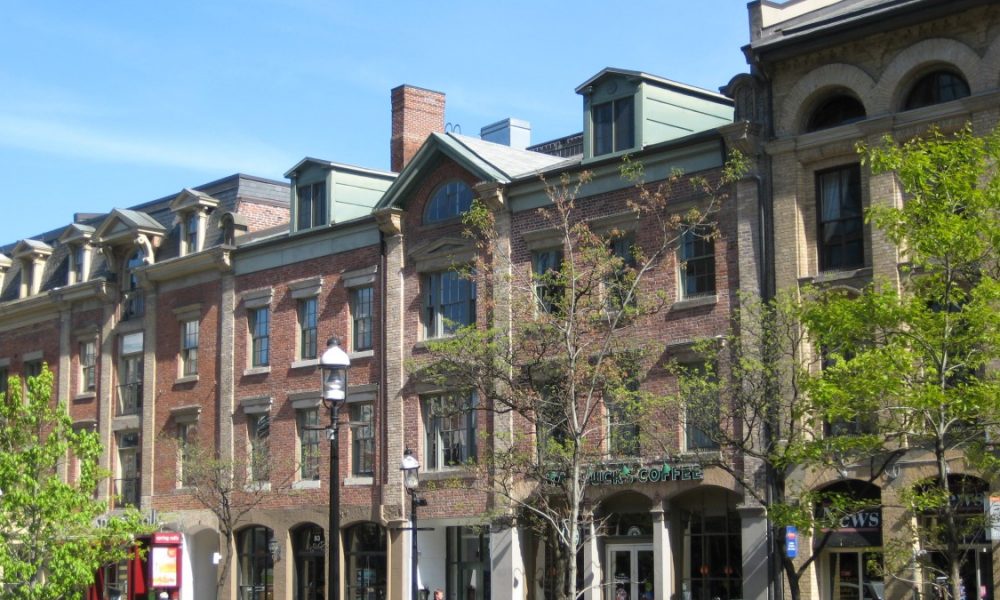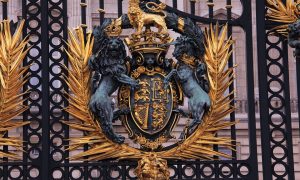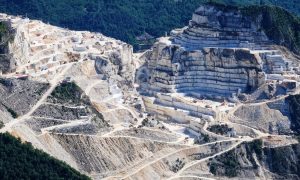To love your city you need to know it thoroughly. Observe it from every possible perspective and angle, know every detail. We often absentmindedly walk its streets, without stopping to reflect on how they used to be like, what process they underwent to become what they are today, what history they lived. Our goal is precisely this: to make known or remember every piece of our city, telling the past, describing the present. And today, by the way, let’s talk about the St. Lawrence district, in the heart of Toronto. Let’s discover together its colors and perfumes, its history, its identity.
The story of St. Lawrence
Located alongside the equally famous Distillery District, it was once an industrial area or rather the first industrial area in York. It began to fill up with the construction of the first Parliament buildings between Parliament and Front Street, two streets that delimit the area south-east of the district, at the end of the 1700s. In the early 1800s, then, farmers begun to creat spaces to trade food products. In 1834, the year in which the city of York became Toronto, this district housed of the most important building: the first city hall.

The building was destroyed by the great fire of 1849. But this paved the way for a new project, a new construction, which came to life in 1854: the St. Lawrence Hall. A 43-meter-wide facade building located south of Front Street. Born to be a public meeting room for Toronto residents, it also housed a police station and prison. It was then integrated into the old building that housed the southern market. And in 1972 it was converted into the Market Gallery. Nowadays, only the council hall is left of the 1845 Hall, on the second floor of the gallery.
From the 19th century onwards
The neighborhood started living again in 1940s. In fact, during this period, the Esplanade was built nearby. A construction project that revitalized the Toronto harbor area, providing jobs and consequently growth. It is a sort of waterfront about 30 meters long, which connected the Gooderham mill to the old Fort Rouillé. At the beginning it was used as a carriageway for carriages and trucks and then became a railway line that converged with the piers. A final transformation of the neighborhood took place during the 70s, thanks to a major project that revitalized the old brownfields and abandoned hangars from the end of the industrial era. Then-mayor David Crombie decided, in fact, to start a restyling by transforming the old industrial area into a residential neighborhood.
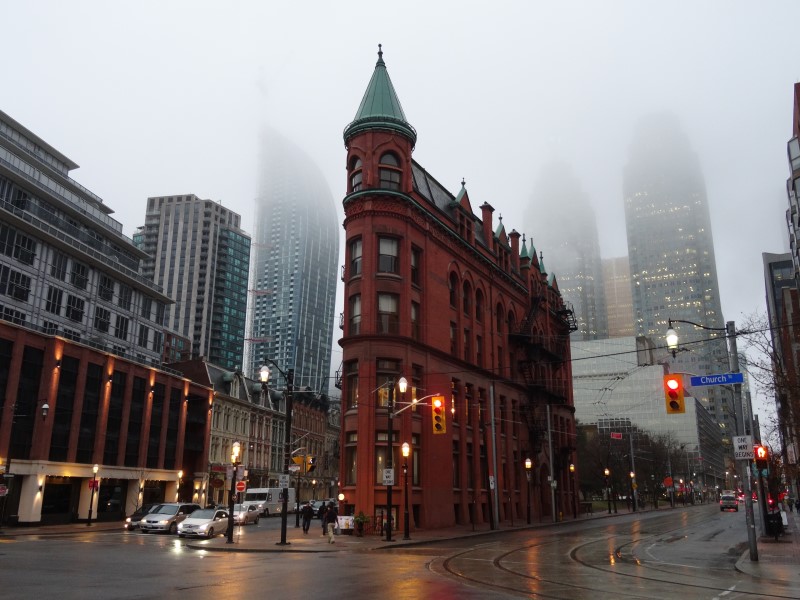
The idea was to break down borders and build townhouses by alternating homes with commercial structures. Many facilities were demolished while others were converted into lofts or commercial spaces. Alan Littlewood and Frank Lewinberg were appointed to carry out the project. They were inspired by the American-Canadian urban planner Jane Jacobs with the addition, later, of changes made by George Baird. The critically acclaimed residential building project ended in the 1990s, leaving the city a new and elegant neighborhood. It become a model of urban planning for many cities in North America. The Flatiron deserves mention, the very special wedge-shaped building built in 1892 which has skyscrapers and the CN Tower in the background. Other notable structures in the neighborhood are St. Lawrence Center for the Arts and the Sony Center for the Performing Arts.
St. Lawrence market
We mentioned that this neighborhood is famous for its market, awarded as the best food market in the world by National Geographic in April 2012. The first public market opened in 1803 and was located in the southern part of the neighborhood. The square became its agora. Every Saturday farmers from the surrounding fields gathered there, selling their products cheaply. And it was, and still is, an explosion of colors, of natural and authentic flavors. The market square, however, also had other uses: here the auctions took place, even those of the black slaves, when they were still legal, and public penalties were carried out. The first wooden building for the market was built in 1814, replaced a few years later by a brick structure with arched entrances on the sides. A part of this building, we said, was the headquarter of the Municipality.
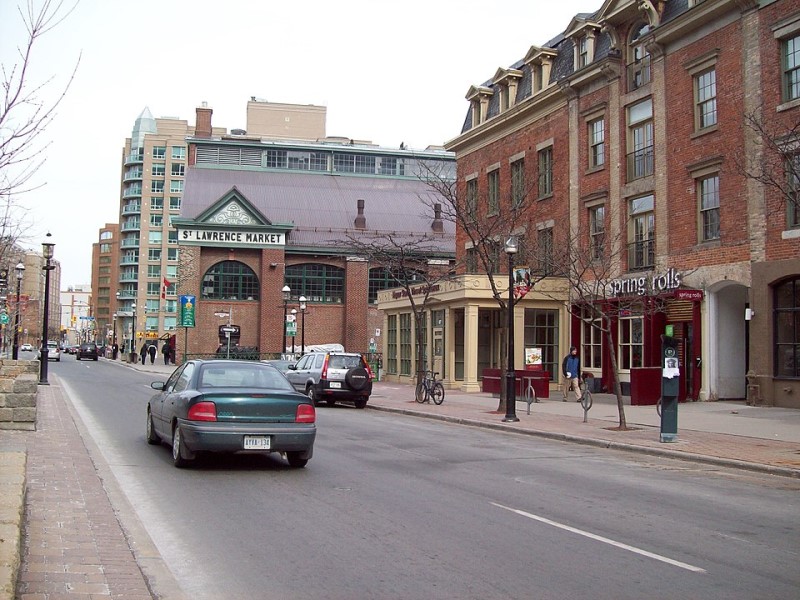
After the fire in 1849, the market also had a new commercial building, the first to be known as St. Lawrence Market, renovated in 1972. There were weekly farmers and antiques markets in the northern area of the neighborhood too. In 1968 a new structure started to be built, and during the excavations remains of the previous buildings were brought to light. In 2015, however, the building was destroyed with a view to a new project which began in July of this year and that will be ready in 2022. Temporarily, the farmers’ market is located on the Esplanade.
Featured image: Ph: SimonP – License: CC BY-SA 3.0
Commenti


